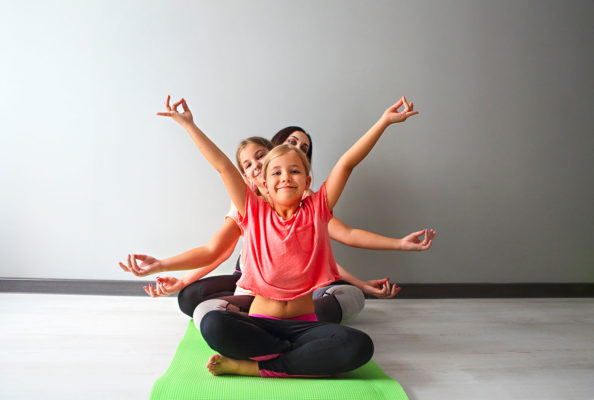Neuro-developmental disorders such as attention-deficit/hyperactivity disorder (ADHD) and autism spectrum disorder (ASD) pose significant challenges to children’s well-being and development. ADHD is characterized by hyperactivity, impulsivity, and difficulties with attention and focus, affecting approximately 10% of children in the US.
On the other hand, autism, a complex neurodevelopmental disorder, is marked by impaired social interactions, communication difficulties, and restricted and repetitive behaviors, with an estimated prevalence of about 1 in 36 children.
Given the substantial undertaking these conditions impose on affected individuals and their families, there has been growing interest in exploring alternative therapies to complement traditional approaches.
How Yoga Can Help Children with ADHD and Autism
Yoga, with its focus on physical postures, breathing techniques, and meditation, has shown promise as a therapeutic intervention for children with ADHD and autism. In this article, we will delve into the peer-reviewed research that supports the use of yoga in alleviating the challenges faced by children with these neurodevelopmental disorders.

Yoga and ADHD
ADHD is characterized by hyperactivity, impulsivity, and difficulties with attention and focus. Several studies have suggested that yoga can help improve these symptoms in children with ADHD.
For instance, a study demonstrated that yoga interventions resulted in significant improvements in attention, self-control, adaptive skills, and classroom behavior in children with ADHD. Another study reported that yoga interventions reduced impulsivity and enhanced executive functions in children with ADHD. These findings support the potential of yoga as a complementary therapy for managing ADHD symptoms.
Yoga and Autism
Autism is a complex neuro-developmental disorder characterized by impaired social interactions, communication difficulties, and restricted and repetitive behaviors. Research exploring the effects of yoga on children with autism has also shown promising results. A study found that a yoga-based intervention improved social interaction and communication skills in children with ASD.
Similarly, another study indicated that yoga interventions were associated with improved social-emotional functioning, sleep, and reduced anxiety in individuals with autism. These findings highlight the potential of yoga as a therapeutic tool for individuals on the autism spectrum.
Mechanisms of Action
The mechanisms underlying the therapeutic effects of yoga in ADHD and autism are not yet fully understood. However, researchers propose several theories. One hypothesis is that the physical postures and breathing exercises in yoga help regulate the nervous system, leading to improved attention, self-regulation, and emotional well-being.
Additionally, the mindfulness component of yoga may enhance self-awareness and decrease stress, contributing to improved behavioral and cognitive functioning.
Meditation thickens the prefrontal cortex, a part of the brain that is associated with attention, focus, and impulse control.
While more research is needed to elucidate these mechanisms, current evidence suggests that yoga’s holistic approach can positively impact children with ADHD and autism.
Yoga has emerged as a promising therapeutic intervention for children with ADHD and autism. Current research supports the use of yoga in improving attention, self-control, social interactions, and emotional well-being in these populations.
Positive Effects of Yoga on Children with ADHD and Autism
While the exact mechanisms of action are still being explored, the positive effects of yoga on neurodevelopmental disorders cannot be ignored.
Integrating yoga into existing treatment approaches for ADHD and autism may offer additional benefits and provide a holistic approach to support the overall well-being of affected children. It is important to consult with healthcare professionals and experienced yoga instructors when implementing yoga as part of a comprehensive treatment plan. By embracing yoga as a therapeutic tool, children with ADHD and autism can cultivate self-awareness, inner calmness, and a greater sense of well-being.
Disclaimer: The information provided in this article is for educational purposes only and is not intended to replace the advice of your healthcare provider. Always consult your healthcare provider before beginning any new exercise program, including yoga, especially if you have a pre-existing medical condition or are experiencing chronic back pain. While every effort has been made to ensure the accuracy of the information presented, the author and publisher cannot be held responsible for any errors or omissions or for any consequences resulting from the use of this information.

